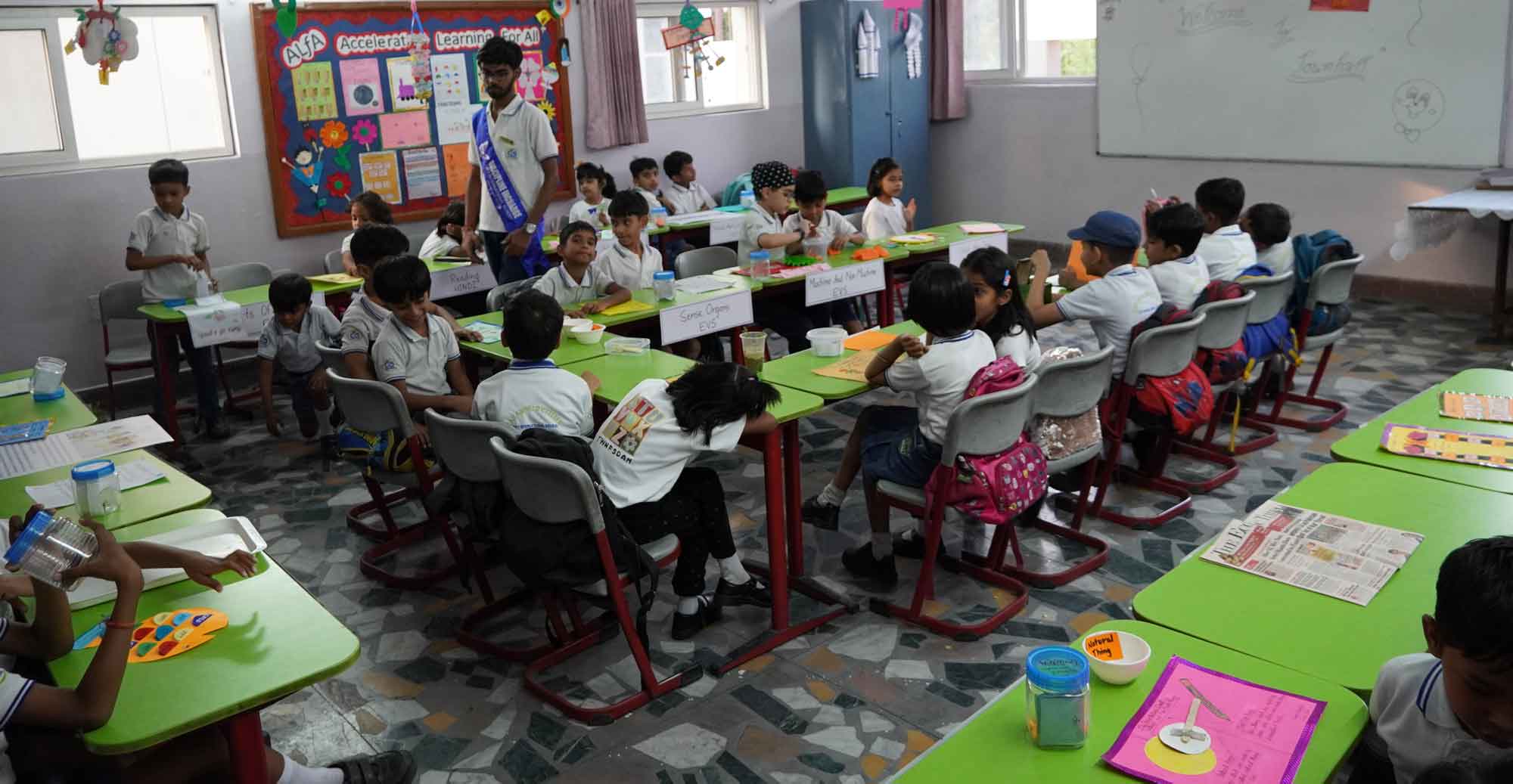When One-Way Teaching Wears a New Disguise: Why Paired Learning Is the Break Schools Actually Need

Walk into many schools today and you'll see smartboards, colorful furniture, maybe even project-based units. The factory model, we're told, is behind us.
But look again. The structure hasn't really changed. Teachers still do most of the talking. Students still spend most of their time listening, waiting, absorbing. Knowledge still flows one way from the front of the room to the back. We've dressed up the classroom, but the script is still the same.
Progressive methods are everywhere in theory: flipped classrooms, active learning, edtech. But in practice, many classrooms are stuck in a loop, trying to innovate without letting go of control.
We've traded chalkboards for tablets, but not authority for agency. We're measuring everything—attendance, homework, quiz scores but ignoring what matters most: is the child actually learning?
Too often, the answer is no.
The Real Problem: Transactional Teaching
Here's what's really going on: our classrooms are built on transactions. A teacher “delivers” a lesson. Students “receive” it. There's a test, some marks, maybe a project. But the deeper work of learning—making meaning, applying ideas, building confidence—often never starts. Even well-trained, well-meaning teachers are stuck in systems that reward delivery over discovery. So, kids sit quietly, nodding, copying, memorizing. And learning gaps quietly widen. This isn't about lazy teaching. It's about a system that's still too top-heavy, even when it pretends not to be.
Now imagine this instead: Two children, face to face. One explains a concept. The other listens, asks, tries it out. Then they switch. They check each other's work. They explain again, differently this time. They start to get it.
That's peer-led, paired learning. That's what the ALfA model is built around. And here's the thing: it's not a supplement. It's a replacement for the old model.
In ALfA classrooms, children don't wait to be taught. They teach. They learn by doing, explaining, correcting, supporting. They move faster because they're driving the learning themselves—not waiting for it to arrive.
In hundreds of ALfA classrooms, kids who were years behind have caught up in weeks—not through tech or tutoring, but through structured peer learning. In a Harvard-led study, ALfA students showed an effect size of 0.89 in just over a month. That's enormous. Especially in under-resourced settings.
This isn't just effective. It's efficient. And it's human.
Why It Works ? When a child explains something to another, they simplify, repeat, reframe. They build empathy. They make space for questions. And both children benefit—because explaining is learning too.
Paired learning builds confidence, curiosity, and communication not as extras, but as essentials. It unlocks the very things the traditional classroom suppresses.
And the Teacher? They don't disappear. They evolve from controller to designer. From the centre to the edge, where they can see the whole system working. They observe, nudge, support. They create the space for children to own the process.
But Is It Realistic? Yes. ALfA started in 20 schools. It's now in 35,000. The model is practical and scalable. And most importantly, it trusts children. That may be the biggest shift of all.
What's in the Way? Mostly, fear. Fear of losing control. Fear of being seen as “doing less.” Fear of letting children lead. But also, inertia—old habits dressed up in new language.
We've accepted the idea that learning takes years, that progress must be slow, that gaps are inevitable. But that's not based on evidence. It's just tradition.
The truth is: when learning is shared, it speeds up. When it's owned, it sticks. And when it's joyful, it scales.
In the Age of AI, What Really Matters?
Now that machines can write, solve, and even teach what do humans bring to the table?
Collaboration. Empathy. Leadership. Creativity. Agency.
All of which happen naturally when children learn together, not alone.
So, What Now? We don't need more pilot projects. We need to change the core of how we see learning. ALfA has shown it's possible in schools across economic divides, across geographies. Not in theory. In action.
So, let's stop waiting for another tool or another training. Let's trust what's already in the room: the children. Let them learn. Let them lead. Let learning become something shared, not performed.
Because one-way teaching is still holding us back.